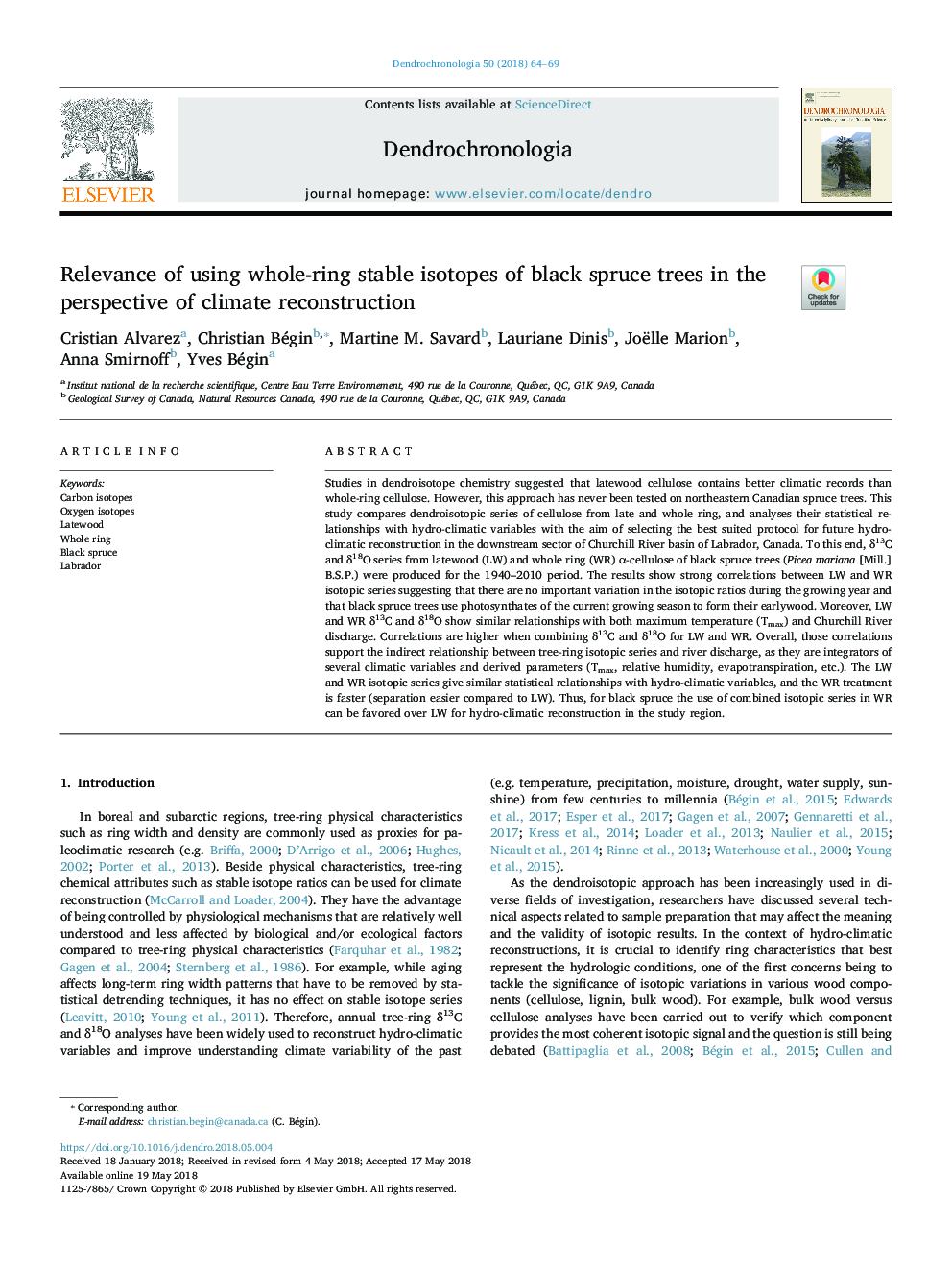| Article ID | Journal | Published Year | Pages | File Type |
|---|---|---|---|---|
| 6541210 | Dendrochronologia | 2018 | 6 Pages |
Abstract
Studies in dendroisotope chemistry suggested that latewood cellulose contains better climatic records than whole-ring cellulose. However, this approach has never been tested on northeastern Canadian spruce trees. This study compares dendroisotopic series of cellulose from late and whole ring, and analyses their statistical relationships with hydro-climatic variables with the aim of selecting the best suited protocol for future hydro-climatic reconstruction in the downstream sector of Churchill River basin of Labrador, Canada. To this end, δ13C and δ18O series from latewood (LW) and whole ring (WR) α-cellulose of black spruce trees (Picea mariana [Mill.] B.S.P.) were produced for the 1940-2010 period. The results show strong correlations between LW and WR isotopic series suggesting that there are no important variation in the isotopic ratios during the growing year and that black spruce trees use photosynthates of the current growing season to form their earlywood. Moreover, LW and WR δ13C and δ18O show similar relationships with both maximum temperature (Tmax) and Churchill River discharge. Correlations are higher when combining δ13C and δ18O for LW and WR. Overall, those correlations support the indirect relationship between tree-ring isotopic series and river discharge, as they are integrators of several climatic variables and derived parameters (Tmax, relative humidity, evapotranspiration, etc.). The LW and WR isotopic series give similar statistical relationships with hydro-climatic variables, and the WR treatment is faster (separation easier compared to LW). Thus, for black spruce the use of combined isotopic series in WR can be favored over LW for hydro-climatic reconstruction in the study region.
Related Topics
Physical Sciences and Engineering
Earth and Planetary Sciences
Atmospheric Science
Authors
Cristian Alvarez, Christian Bégin, Martine M. Savard, Lauriane Dinis, Joëlle Marion, Anna Smirnoff, Yves Bégin,
